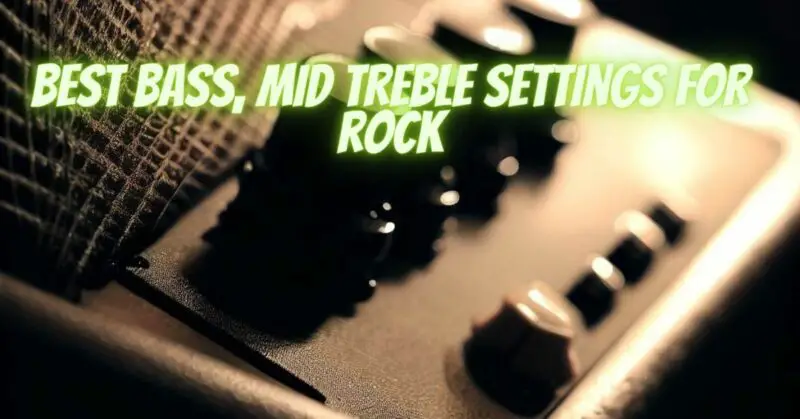Rock music is characterized by its powerful and energetic sound, featuring prominent basslines, distinct guitar riffs, and dynamic vocals. To optimize your listening experience and bring out the best in rock music, adjusting the equalizer settings can help fine-tune the bass, midrange, and treble frequencies. In this article, we will explore the best EQ settings for bass, midrange, and treble to enhance the rock genre’s sonic qualities and deliver an immersive listening experience.
Understanding EQ and Rock Music: Equalization, or EQ, allows you to modify the frequency response of your audio system, enabling you to shape the sound to your preference. When it comes to rock music, it’s important to strike a balance that accentuates the driving basslines, crisp guitar tones, and powerful vocals while maintaining clarity and avoiding distortion.
Recommended EQ Settings for Rock Music:
- Bass:
- Boost: Increase the lower frequency bands, typically around 80Hz to 150Hz, to emphasize the impact and depth of the bass guitar and kick drum. This adds weight and punch to the overall mix without overpowering other instruments.
- Fine-tuning: Adjust the bass boost incrementally to find the sweet spot where the bassline is clearly defined and present without muddying the rest of the mix. Avoid excessive boosting to prevent distortion.
- Midrange:
- Presence Boost: Enhance the midrange frequencies, around 800Hz to 2kHz, to bring out the gritty and aggressive qualities of electric guitars and vocals. This helps the guitars cut through the mix and adds clarity to vocal performances.
- Fine-tuning: Make subtle adjustments to the midrange boost to strike a balance between clarity and warmth. Avoid excessive boosting, as it may result in harshness or an unnatural sound.
- Treble:
- High-frequency Boost: Increase the higher frequency bands, typically around 5kHz to 10kHz, to add definition and sparkle to cymbals, hi-hats, and guitar solos. This brings out the details and enhances the overall brightness of the mix.
- Fine-tuning: Adjust the treble boost conservatively to prevent the mix from becoming overly bright or sibilant. Find a balance that maintains clarity without causing fatigue during extended listening sessions.
Remember, these EQ settings serve as a starting point, and personal preferences may vary. It’s essential to listen critically and make adjustments based on your specific equipment, room acoustics, and the characteristics of the rock music you’re listening to.
Conclusion:
Optimizing the EQ settings for rock music can significantly enhance the listening experience, emphasizing the power and energy of the genre. By boosting the bass, enhancing the midrange presence, and adding sparkle to the treble frequencies, you can bring out the distinct qualities of rock music. However, it’s important to exercise moderation and avoid excessive boosting to maintain a balanced mix and prevent distortion. Experiment with the suggested EQ settings while paying attention to the overall sound quality, ensuring that the instruments and vocals are well-defined and impactful. With careful adjustments, you can unlock the full potential of your rock music and enjoy a truly immersive listening experience.


